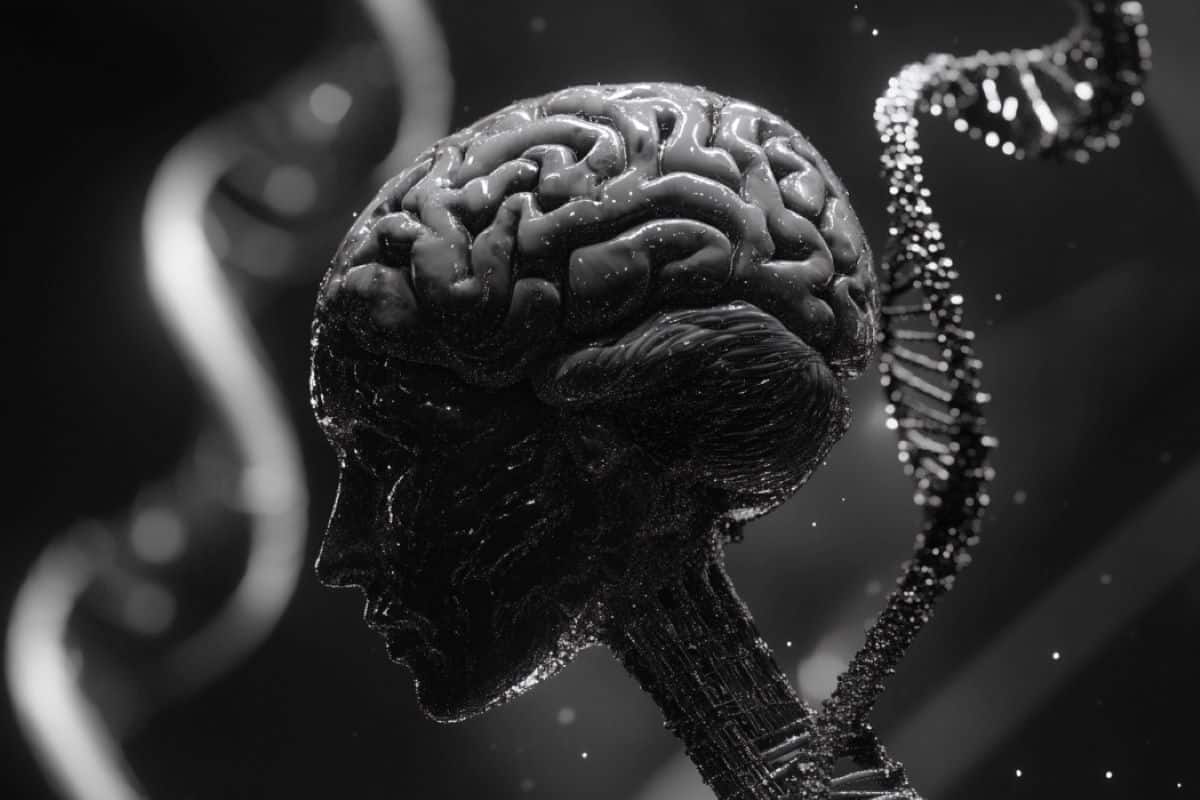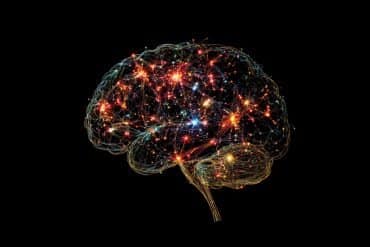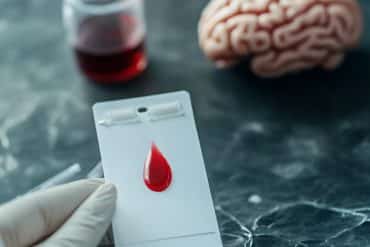Summary: Researchers have created “mini-brains” using stem cells from patients with a rare form of autism, allowing them to study brain development in detail. These organoids revealed how a genetic mutation in MEF2C disrupts the balance between excitatory and inhibitory neurons, leading to autism.
The study also found that an experimental drug, NitroSynapsin, can partially correct this imbalance in the organoids, offering hope for new autism treatments. This research highlights how brain organoids can help explore potential therapies for autism spectrum disorder.
Key Facts:
- “Mini-brains” created from stem cells show how MEF2C mutations cause autism.
- NitroSynapsin restored neuron balance in brain organoids, showing treatment potential.
- Research offers insights into new drug strategies for autism spectrum disorder.
Source: Scripps Research Institute
Using stem cells generated from patients with a rare and severe form of autism spectrum disorder and intellectual disability, Scripps Research scientists have grown personalized “mini-brains” (or organoids) to study the disorder in new detail.
The lab-grown organoids allowed the team to gain a new understanding of how one genetic mutation leads to autism spectrum disorder. It also showed that an experimental drug, called NitroSynapsin, reversed some of the brain dysfunction associated with autism in these models.

“Our work shows how this genetic mutation that has been associated with autism, disrupts the typical balance of brain cells during development,” says Stuart A. Lipton, MD, Ph.D., Step Family Foundation Endowed Professor and co-director of the Neurodegeneration New Medicines Center at Scripps Research, a clinical neurologist, and senior author of the new research published online in Molecular Psychiatry on September 30, 2024.
“But we’ve also established that there could be ways to address this imbalance later in life.”
Learning from patients
Autism spectrum disorder (ASD) is a neurological and developmental disorder that affects social interactions, repetitive interests and behaviors, and communication. The causes of ASD are only partially known; a number of genetic variants have been associated with the disorder, but each only explain a tiny percentage of cases.
For many years, studies of ASD have revolved around modeling the disorder in mice or studying isolated human brain cells. Neither is a perfect mimic for the complexity of an interconnected human brain.
Lipton and his colleagues focused on MEF2C haploinsufficiency syndrome (MHS), a rare and severe form of ASD and intellectual disability caused by a genetic variation in the MEF2C gene.
They used skin cells isolated from patients with MHS and used modern stem cell biology techniques to transform those cells into human stem cells, and then grew them into small, millimeter-sized “mini-brain” organoids in which the researchers could study how the various types of brain cells interact with each other.
“We could reproduce essential aspects of the brains of patients to study their electrical activity and other properties,” says Lipton.
“We actually brought kids into the lab to see their own mini-brains and that was quite emotional for the children and families alike.”
In healthy human brains and brain organoids, neural stem cells develop into nerve cells (or neurons), which send and receive messages throughout the brain, as well as into various types of glial cells, which are supportive cells recently shown to be important in signaling and in immune function.
Healthy brains contain a balance of excitatory neurons that promote electrical signaling, and inhibitory neurons that block this signaling. Autism causes an excitatory/inhibitory imbalance, often resulting in too much excitation.
In the organoids developed from the cells of children with MHS, the neural stem cells more often developed into glial cells, causing a disproportionate number of glial cells compared to neurons, Lipton’s group found. In particular, the MHS organoids had fewer inhibitory neurons than usual. This led to excessive electrical signaling in the mini-brains, just like many real human brains with ASD.
A role for microRNA
When Lipton’s group probed exactly how MEF2C mutations could lead to this imbalance between cell types, they found nearly 200 genes that were directly controlled by the MEF2C gene. Three of these genes stood out—rather than encoding for DNA that led to messenger (m)RNA and then protein expression, they encoded genes for microRNA molecules.
MicroRNAs (miRNAs) are small RNA molecules that, rather than producing proteins themselves, bind to DNA to control gene expression. This month, two scientists won the 2024 Nobel Prize in Physiology or Medicine for their work describing the discovery of miRNA molecules and how they can impact cell development and behavior.
“In our study, a few specific miRNAs appear to be important in telling developing brain cells whether to become glial cells, excitatory neurons, or inhibitory neurons,” says Lipton.
“Mutations in MEFC2 alter the expression of these miRNAs which, in turn, prevent the developing brain from making proper nerve cells and proper connections or synapses between nerve cells.”
Early, developing brain cells from patients with MHS, Lipton’s group found, have lower levels of three specific miRNAs. When the researchers added extra copies of these miRNA molecules to the patient-derived brain organoids, the mini-brains developed more normally, with a standard balance of neurons and glial cells.
A potential treatment
Since ASD is generally not diagnosed during fetal brain development, treatments that aim to alter initial development—such as correction of a mutated gene or addition of miRNA molecules to stop the imbalance of cell types—are not currently feasible.
However, Lipton was already developing another drug that could help promote the balance between excitatory and inhibitory neurons, even after development.
Lipton’s group recently tested such a drug, which he and colleagues invented and patented under the name NitroSynapsin (aka EM-036), for its ability to restore brain connections in “mini-brains” made from cells affected by Alzheimer’s disease.
In the new paper, they tested whether the drug could also help treat the MHS form of autism. Using the patient-derived brain organoids, Lipton and his colleagues showed that in fully developed brain organoids that had an imbalance between cell types, NitroSynapsin could partially correct the imbalance, preventing the hyperexcitability of the neurons and restoring excitatory/inhibitory balance in the mini-brain. This also protected the nerve cell connections or synapses.
More work is needed to show whether the drug improves symptoms of patients with MHS, or influences other types of autism spectrum disorder that are not caused by mutations in the MEF2C gene. Lipton says he hypothesizes this could be the case, since MEF2C is known to influence many other genes associated with autism.
“We are continuing to test this drug in animal models with the aim of getting it into people in the near future,” says Lipton. “This is an exciting step in that direction.”
About this genetics and Autism research news
Author: Stuart A. Lipton
Source: Scripps Research Institute
Contact: Stuart A. Lipton – Scripps Research Institute
Image: The image is credited to Neuroscience News
Original Research: Open access.
“Dysregulation of miRNA expression and excitation in MEF2C autism patient hiPSC-neurons and cerebral organoids” by Stuart A. Lipton et al. Molecular Psychiatry
Abstract
Dysregulation of miRNA expression and excitation in MEF2C autism patient hiPSC-neurons and cerebral organoids
MEF2C is a critical transcription factor in neurodevelopment, whose loss-of-function mutation in humans results in MEF2C haploinsufficiency syndrome (MHS), a severe form of autism spectrum disorder (ASD)/intellectual disability (ID).
Despite prior animal studies of MEF2C heterozygosity to mimic MHS, MHS-specific mutations have not been investigated previously, particularly in a human context as hiPSCs afford.
Here, for the first time, we use patient hiPSC-derived cerebrocortical neurons and cerebral organoids to characterize MHS deficits. Unexpectedly, we found that decreased neurogenesis was accompanied by activation of a micro-(mi)RNA-mediated gliogenesis pathway.
We also demonstrate network-level hyperexcitability in MHS neurons, as evidenced by excessive synaptic and extrasynaptic activity contributing to excitatory/inhibitory (E/I) imbalance.
Notably, the predominantly extrasynaptic (e)NMDA receptor antagonist, NitroSynapsin, corrects this aberrant electrical activity associated with abnormal phenotypes.
During neurodevelopment, MEF2C regulates many ASD-associated gene networks, suggesting that treatment of MHS deficits may possibly help other forms of ASD as well.






